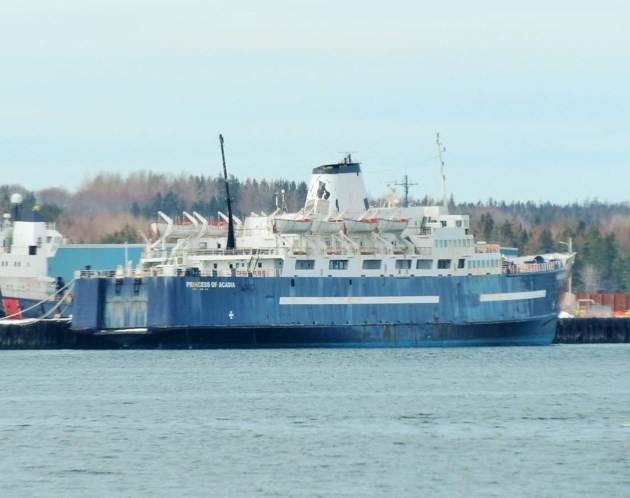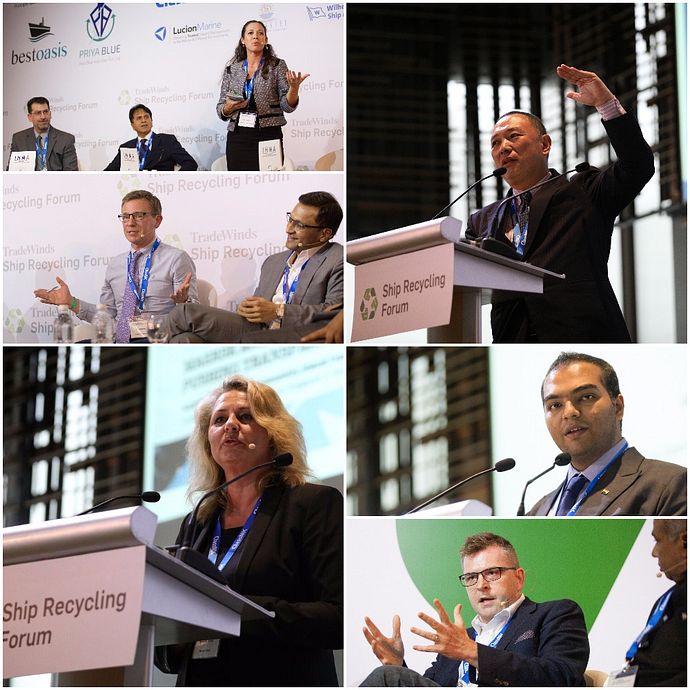The marked improvement of the dry bulk market
has led to the reduction in the number of ships sold for scrap, despite the
fact that prices offered are more than attractive. In its latest weekly report,
GMS, the world’s leading cash buyer said that “the recent market upsurge still
shows no sign of abating, with another strong showing this week as levels
propel ever closer to the coveted USD 400/LDT mark. One element that is helping
this continued resurgence of fortunes is a distinct shortage of tonnage making
it to the various recycling waterfronts. Compared to the corresponding period
last year, supply to the beaches is about 50% lower this year (especially in
the subcontinent)”.
GMS added that “coupled with improving local
steel plate prices and the currency (especially in India), this has
subsequently led to a frantic demand, particularly for pre-monsoon tonnage in
the Indian sub-continent, as each new / successive fixture in the market
fetches a higher number than the previous sale. How much longer will this
market heat sustain remains a growing point of concern, as many industry
players and recyclers believe the market may have already peaked, with prices
set to soften as we head into April and even more likely, for pre-monsoon
deliveries going into May.
International markets have certainly taken
something of a battering of late and local steel markets in China and Turkey
have come off significantly as well – perhaps an ominous foretelling of an
inevitable unfolding of events in the Indian sub-continent recycling markets.
Notwithstanding, it has certainly been a tremendous rally when compared to the
doldrums that the market was in over the same period of 2016. The lowly USD
200s/LDT has sharply rebounded to almost touch the USD 400/LDT mark and it will
be a momentous occasion once that psychological barrier has been breached, for
a market that can be considered to have almost fully recovered from the
ship-recycling recession of 2015 – early 2016”.
In a separate report, Allied Shipbroking
noted that “the momentum continues on the price front, with many now seeing the
possibility of touching levels of US$ 400/ldt fairly soon, especially if things
continue as they are now. The lack of demo candidates has really put the
pressure on cash buyers which have shown a considerable increase in appetite.
As such, competition for each unit that does come to market is heavily contested
and many are even willing to push for ever higher numbers as a speculative vibe
starts to really take over the overall market. Local prices for steel have also
helped keep this current momentum moving, while the increase in local demand
has provided the confidence for many buyers to take on the extra risk. Given
that this tends to always be a period in the year where we see a notable
increase in activity as breakers aim to conclude a good volume before they
reach the monsoon slump just before the summer months. A lot looks to be now
dependent on the price of steel plates themselves, since the improvement in
freight rates noted in sectors such as that of dry bulkers has surely generated
considerably higher price ideas from the side of owners, who look to postpone
the decision as much as possible”.
Similarly, Clarkson Platou Hellas said that
“the market remained considerably subdued again previous week representing
something similar to summer months where we normally expect a quieter period of
activity. This has come from the ever improving freight rates in the Container
and Dry markets. One fundamental change from this is that we do not expect to
see the 2004 plus built units that were being circulated at the beginning of
the year and these aged units are now no longer natural recycling candidates,
further reducing the future supply. Furthermore the lack of vessels is also
down to several Owners touting the market to see whether the USD 400/ldt level
is actually achievable and refraining from marketing their vessels until these
numbers are met. As of yet, it has not been seen although we are creeping ever
closer. Some eyes are on China where the iron ore prices have fallen this week
and thus, the hype recently witnessed may not fully materialise. One thing not
to forget is that if demand is prominent but with limited tonnage supply, then
as seen previously such as 2013, rates could significantly increase, so time
will tell if the USD 400/level is reached and thereafter for how high it can
rise”.
Source:
hellenic
shipping news. 30 March 2017




(1).jpg)

